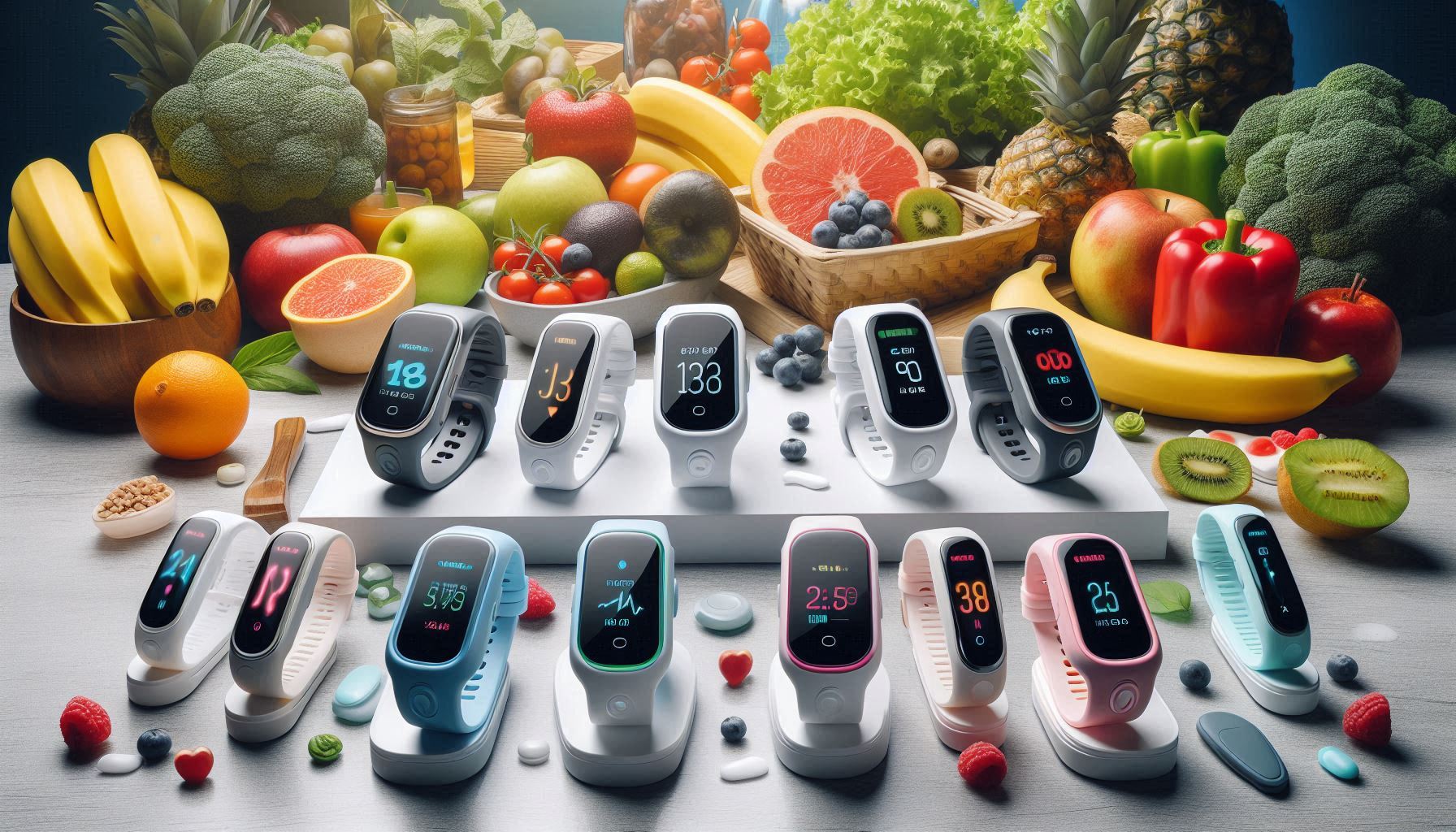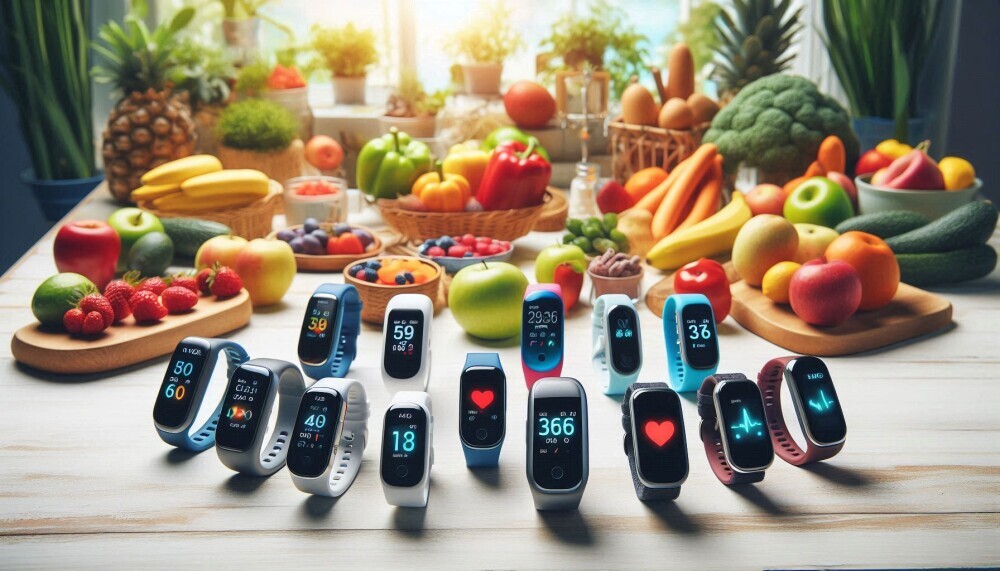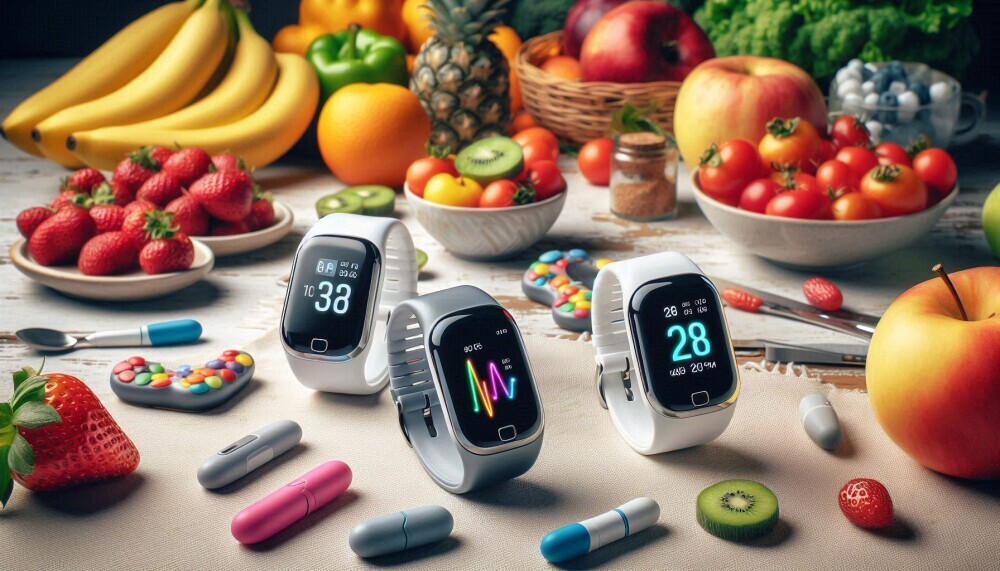Real Time Diet Adjustments: Using Glucose Wearables to Hack Your Meals. This is the subject for this article. Glucose wearables can play a huge part in meal planning. Let’s take a closer look at how to do this!
Introduction
For decades, food choices have been guided by calorie counting, portion control, and general nutrition advice. While these methods provide a broad framework, they often fail to capture the unique responses each individual body has to specific meals. What raises one person’s blood sugar dramatically might leave another almost unaffected. This variation has given rise to a new era of personalized nutrition powered by glucose wearables. By tracking your body’s real time glucose levels, these devices can provide insights into how particular meals, snacks, and even drinks affect you personally.
The concept is simple yet powerful. Instead of guessing which foods support energy balance and long term health, users can rely on continuous glucose data to adjust their diet almost immediately. This allows you to optimize meals for stable energy, improved focus, and reduced cravings. Beyond personal wellness, the technology offers benefits for those with prediabetes, diabetes, or anyone aiming to improve metabolic health. Let’s dive into how glucose wearables can be used to hack your meals and make nutrition more personalized than ever before.
What are glucose wearables?
Glucose wearables are compact devices designed to measure glucose levels in the body continuously or at frequent intervals. Traditional versions rely on small sensors inserted under the skin, while newer models are exploring non invasive methods using light, electrical signals, or radio frequency. Data is transmitted to a smartphone or smartwatch app, giving you a rolling picture of how your glucose fluctuates during the day. This live feedback can help you understand how specific foods affect you, highlight the timing of spikes, and guide meal choices in real time.
How real time glucose feedback transforms diet
Most people experience post meal glucose spikes, but the size, timing, and intensity differ widely between individuals. With a glucose wearable, you can identify which foods cause sudden increases and which meals keep levels stable. For example, two people eating the same pasta dish may have completely different responses. By spotting your personal glucose triggers, you can start adjusting portion sizes, mixing foods differently, or changing the order in which you eat components of a meal.
This transforms dieting from a rigid set of rules into a flexible, personal experiment. Instead of following generic charts, you learn directly from your own body. Over time, you can build a diet that balances enjoyment with stable energy and reduced risk of metabolic issues.
Key features of glucose wearables for diet hacking
What to look for in a glucose wearable
• Continuous monitoring with readings every few minutes
• Easy to use app with meal logging and trend analysis
• Alerts for high or low glucose readings
• Integration with fitness trackers and nutrition apps
• Minimal calibration requirements
• Comfortable and discreet design
Some devices come with companion apps that allow you to tag meals, snacks, and drinks. This lets you correlate food choices with glucose patterns. Others offer predictive alerts, warning you when a meal is likely to spike your levels based on past responses.
Prices and availability
The price of glucose wearables varies depending on the type of technology and region. Traditional continuous glucose monitors usually come with a starter kit cost and recurring expenses for replacement sensors, which can range from tens to several hundred pounds per month. Some new non invasive prototypes are being developed to reduce or eliminate consumables, which could make them more affordable in the long run, though early devices may carry higher upfront prices.
For general wellness users, availability may be limited, as many regulated devices are primarily designed for people with diabetes. However, a growing number of companies are targeting the health and fitness market, offering access to glucose data for those who want to experiment with diet optimization.
Benefits of using glucose wearables for meal adjustments
• Personalized feedback that reflects your unique biology
• Improved awareness of hidden sugar spikes from unexpected foods
• Ability to test different meal strategies and see results immediately
• Potential for better weight management by reducing cravings linked to glucose swings
• Increased energy stability throughout the day
• Motivational effect from seeing live feedback on food choices
Downsides and considerations
• Devices can be expensive with ongoing sensor costs
• Some require invasive sensor placement which may feel uncomfortable
• Data overload can be overwhelming without clear guidance
• Apps may vary in quality and usability
• Accuracy can be affected by hydration, motion, or sensor placement
• Not all devices are available to people without diabetes in every region
Who should use glucose wearables?
Best suited for
• People with prediabetes or type 2 diabetes seeking better control
• Athletes aiming to optimize fuel timing and recovery
• Health conscious individuals curious about personalized nutrition
• Those struggling with energy crashes and cravings
Not ideal for
• People uncomfortable with wearing a sensor on their body
• Anyone without the budget for ongoing costs
• Individuals who may experience anxiety from tracking too much data
How to get the best from your wearable?
Bullet Box: Practical tips for diet hacking with glucose wearables
• Log meals consistently so you can compare food responses
• Test small experiments like eating protein before carbs to see the effect
• Pair high carb foods with fiber and fat to blunt spikes
• Avoid snacking too often to let glucose return to baseline
• Review weekly trends instead of obsessing over every reading
• Share results with a nutritionist or healthcare provider for guidance
By approaching the data with curiosity instead of judgment, you can make gradual, sustainable changes to your diet.
Real world applications
- Meal timing
Some people notice lower spikes when eating the same meal earlier in the day compared to late at night. Tracking this pattern allows adjustments to dinner timing for better metabolic outcomes. - Food pairings
Adding vegetables or healthy fats to a high carb meal often reduces the glucose surge. Wearables allow you to test this directly. - Exercise timing
A short walk after meals can significantly reduce glucose spikes. With real time data, you can see exactly how much impact light activity has. - Identifying problem foods
Certain foods, even those marketed as healthy, may trigger high responses. Wearables expose these hidden triggers so you can make informed substitutions.
Frequently asked questions
1. Do glucose wearables replace finger sticks entirely
Some devices can reduce or even eliminate the need for finger sticks, but others may still require occasional calibration. For non medical use, wearables provide enough information for diet adjustments without constant finger tests.
2. Are they safe to use for people without diabetes
Yes, many people use them for wellness and fitness purposes. However, they should not be relied upon for medical decisions unless approved for such use.
3. How long does a sensor last
Most sensors last between 7 and 14 days, after which they must be replaced. Non invasive models under development aim to extend wear time.
4. Can glucose wearables help with weight loss
They can support weight management by helping users avoid energy crashes and cravings, which reduces overeating. Combined with exercise and balanced nutrition, they may contribute to gradual weight loss.
5. What foods usually cause spikes
High carb foods such as white bread, rice, sugary drinks, and desserts often lead to glucose spikes. But the exact response varies, which is why testing with a wearable is valuable.
6. Do insurance or health services cover the cost
In some regions, people with diabetes may receive coverage for medical grade glucose monitors. For general wellness users, coverage is unlikely, so costs are typically out of pocket.
Conclusion
Glucose wearables are reshaping the way people think about diet. Instead of relying on broad nutrition guidelines, individuals can now fine tune their food choices in real time based on their own glucose responses. This makes dieting less about restriction and more about smart experimentation. By learning which foods keep you stable and which trigger spikes, you can adjust your meals for energy, focus, and long term health.
While costs and access remain challenges, the growing interest in personalized nutrition is likely to drive wider adoption. For those willing to experiment, glucose wearables offer a window into the hidden story of how food affects the body. Whether you are managing a health condition, pursuing fitness goals, or simply curious, real time feedback can help you hack your meals in a way that generic advice never could. The future of nutrition is personal, and glucose wearables are leading the way.
Our Thanks!
Many thanks to you for taking the time to read through this article on Real Time Diet Adjustments: Using Glucose Wearables To Hack Your Meals. We hope that you have found it helpful. You might like to read one of our related articles! This one is titled The Rise Of Non Invasive Glucose Monitoring: Are Needle Free Wearables The Future?
Please let us know in the comments which type of wearable health tech device you are currently using or plan to buy in the future! The comments section is just underneath this article!
**Here is a bit of transparency. Our website www.vertevia.com does contain affiliate links and Amazon links. So, if you did make a purchase through the website, we may receive a small commission. This is at no extra cost to you whatsoever. It’s just a way for you to support us as we continue to bring you top quality content**
All the best!
Eamon





